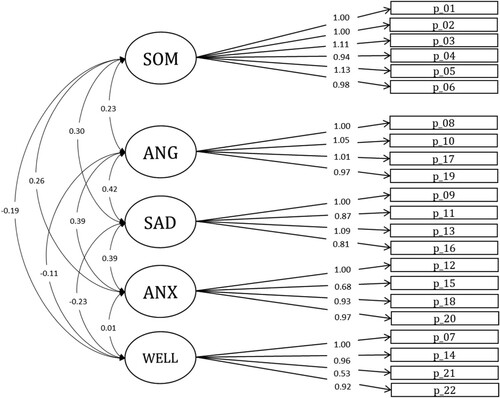Figures & data
Table 1. Sample Description and Means (M), Standard Deviations (SD) and Internal Consistencies (Cronbach’s α, McDonald's ω) for the Different Language Versions of the SSKJ 3–8 Stress-Symptom and Well-Being Scales.
Table 2. Descriptive Statistics and Correlations With Mental Health and Behavioral Problems (Separately for the Language Versions).
Figure 1. Five-Factor Structure of the SSKJ 3–8 Stress-Symptom and Well-Being Scales (German Version). Note. SOM = Somatic Symptoms, ANG = Anger, SAD = Sadness, ANX = Anxiety, WELL = Well-Being.

Table 3. Model Fit Indicesa of the SSKJ 3–8 Stress-Symptom and Well-Being Scales for the Six Language Versions.
Table 4. Testsa of Metric Invariance of the SSKJ 3–8 Stress-Symptom and Well-Being Scales Across Different Language Versions.
Table 5. Testsa of Metric Invariance of the SSKJ 3–8 Stress-Symptom and Well-Being Scales Between Boys and Girls for the Different Language Versions.
Table 6. Mean Differences Between Boys and Girls.
Supplemental Material
Download MS Word (32.1 KB)Data availability statement
The data that support the findings of this study are available from the corresponding author upon reasonable request.
